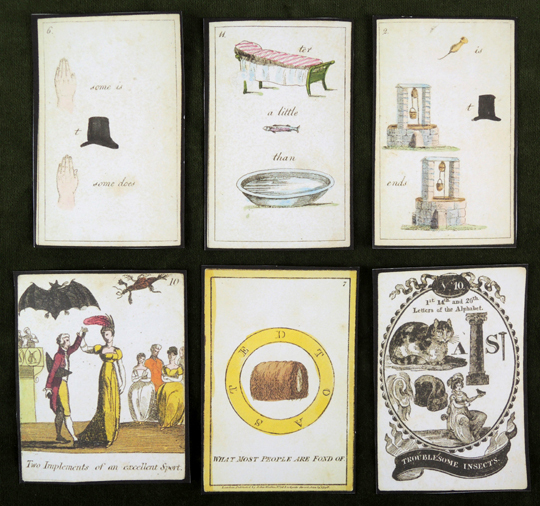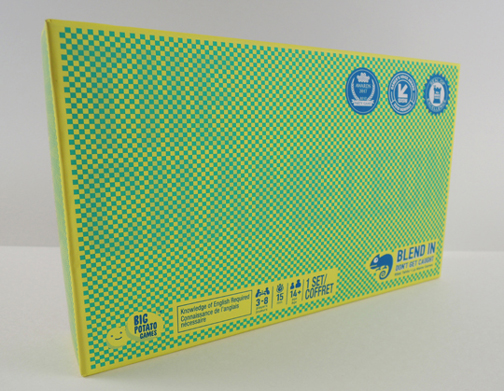 Always on the lookout for literary and word games, I spotted this fantastically stylish box on the shelves of JaZams, our local independently-owned toy store. The game came highly recommended by their staff, and has won several awards to boot. Did it live up to the hype? Read on!
Always on the lookout for literary and word games, I spotted this fantastically stylish box on the shelves of JaZams, our local independently-owned toy store. The game came highly recommended by their staff, and has won several awards to boot. Did it live up to the hype? Read on!
“The Chameleon,” released by Big Potato Games, retails for around $15. It’s a card and category game for 3-8 players. But it’s also a game of deception, because the whole point is to fake out the other players when you are the “chameleon.” The game includes 40 topic cards, 14 code cards, 2 chameleon cards, 2 die, a marker and custom card, instructions, and one super awesome Big Potato Games logo sticker. Here’s a sample of the box contents:
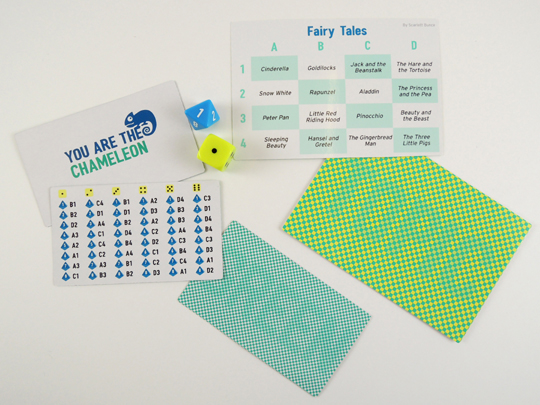 Let’s say there are 4 people playing this round. As you can see below, there are 3 identical Code Cards, but only 1 Chameleon Card. Each player randomly chooses a card and keeps it secret from the other players.
Let’s say there are 4 people playing this round. As you can see below, there are 3 identical Code Cards, but only 1 Chameleon Card. Each player randomly chooses a card and keeps it secret from the other players.
 The dealer flips over the Topic Card and rolls the yellow and blue die. Players with Code Cards quietly match the die roll results to the appropriate category of the Topic Card. So, in the case of the roll below, the secret category is “The Three Little Pigs.”
The dealer flips over the Topic Card and rolls the yellow and blue die. Players with Code Cards quietly match the die roll results to the appropriate category of the Topic Card. So, in the case of the roll below, the secret category is “The Three Little Pigs.”
 Starting with the dealer, each player takes a turn describing the secret category with one word. But if you are the chameleon, you are faking your little heart out, trying to come up with a word to describe a category you have NO idea about. But you can listen to the other players and wager a pretty good guess, all the while keeping a straight face.
Starting with the dealer, each player takes a turn describing the secret category with one word. But if you are the chameleon, you are faking your little heart out, trying to come up with a word to describe a category you have NO idea about. But you can listen to the other players and wager a pretty good guess, all the while keeping a straight face.
When everyone has said a word, the players have to guess who the chameleon is.
Having played a couple rounds, I can say that this game is a LOT of fun! The creative word usage, fake outs, shifty looks, pointing fingers, and increasingly bold accusations make it low stress, non-competitive, and utterly hilarious. The more players involved, the funnier it gets. Bonus…there’s also a blank laminated Topic Card and dry erase marker to make a custom Topic Card!
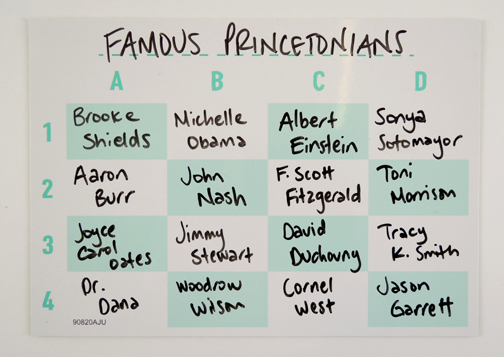 The game manufacturer’s recommended age range is 14 & up, but we test ran the game with the 9-12 year-olds in Cotsen Critix, our children’s literary society (we just made sure we pulled out some of the more mature Topic Cards, like ones that included the names of alcoholic beverages). After just a touch of trouble with the instructions and locating the secret category from the dice roll, the kids were off and running!
The game manufacturer’s recommended age range is 14 & up, but we test ran the game with the 9-12 year-olds in Cotsen Critix, our children’s literary society (we just made sure we pulled out some of the more mature Topic Cards, like ones that included the names of alcoholic beverages). After just a touch of trouble with the instructions and locating the secret category from the dice roll, the kids were off and running!
They liked the various topics, coming up with the description word, and how funny it was to both be, and try to figure out, the chameleon. As one kid so aptly put it “Something is fun about lying to your friends’ faces.” Hah!
The beautiful packaging, clever concept, interesting topics, clear instructions, and devious social nature of this game make it extremely enjoyable. 5 out of 5 stars. Highly recommended!

 A shifting map full of flying horses, hungry demons, mystical landscapes, and the New Jersey turnpike? This could only be a project for
A shifting map full of flying horses, hungry demons, mystical landscapes, and the New Jersey turnpike? This could only be a project for 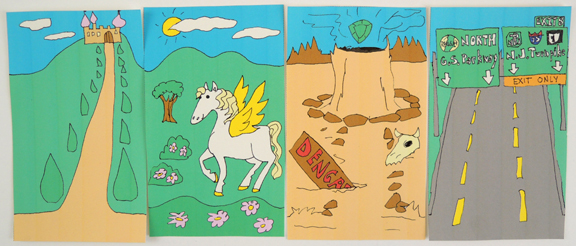 Myriorama cards, which debuted in 19th century Europe, are these cool little decks of cards with matching skies and horizon lines (I review of a modern deck of myriorama cards in
Myriorama cards, which debuted in 19th century Europe, are these cool little decks of cards with matching skies and horizon lines (I review of a modern deck of myriorama cards in 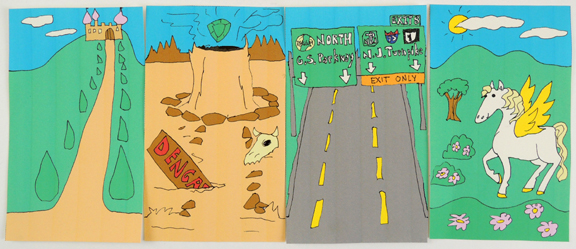 You’ll need:
You’ll need: For our story time activity, I gave each kid a colorful envelope bedecked with a silver
For our story time activity, I gave each kid a colorful envelope bedecked with a silver 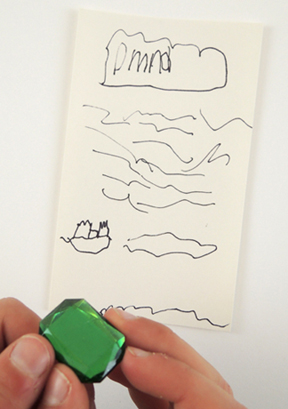 If you’d like the myriorama cards I drew, you’ll find the black and white template
If you’d like the myriorama cards I drew, you’ll find the black and white template  Calling all consulting detectives…grab your sparkle stem magnifying glass and examine this most intriguing collection of 18th and 19th century puzzle cards. And, while the individual man is an insoluble puzzle, the answers to these cards are at the end of the post (and you can print a set of your own)!
Calling all consulting detectives…grab your sparkle stem magnifying glass and examine this most intriguing collection of 18th and 19th century puzzle cards. And, while the individual man is an insoluble puzzle, the answers to these cards are at the end of the post (and you can print a set of your own)!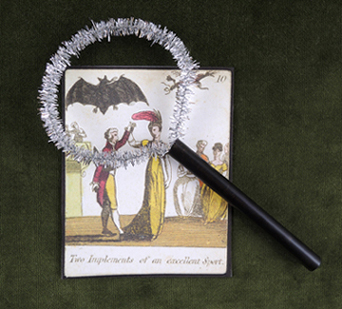 And what of those curious cards? They are reproductions of 18th and 19th century rebus puzzle cards in our library’s
And what of those curious cards? They are reproductions of 18th and 19th century rebus puzzle cards in our library’s 